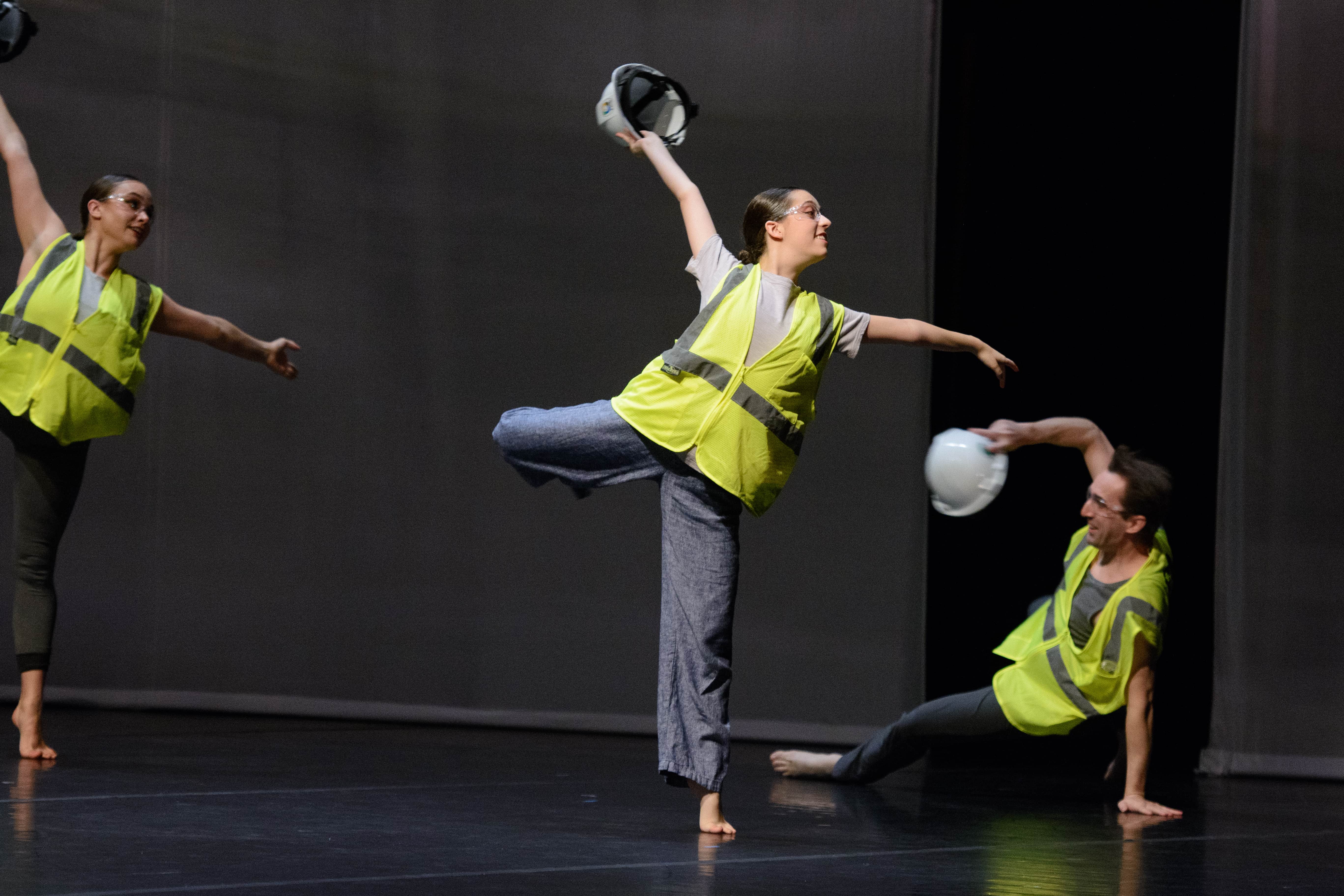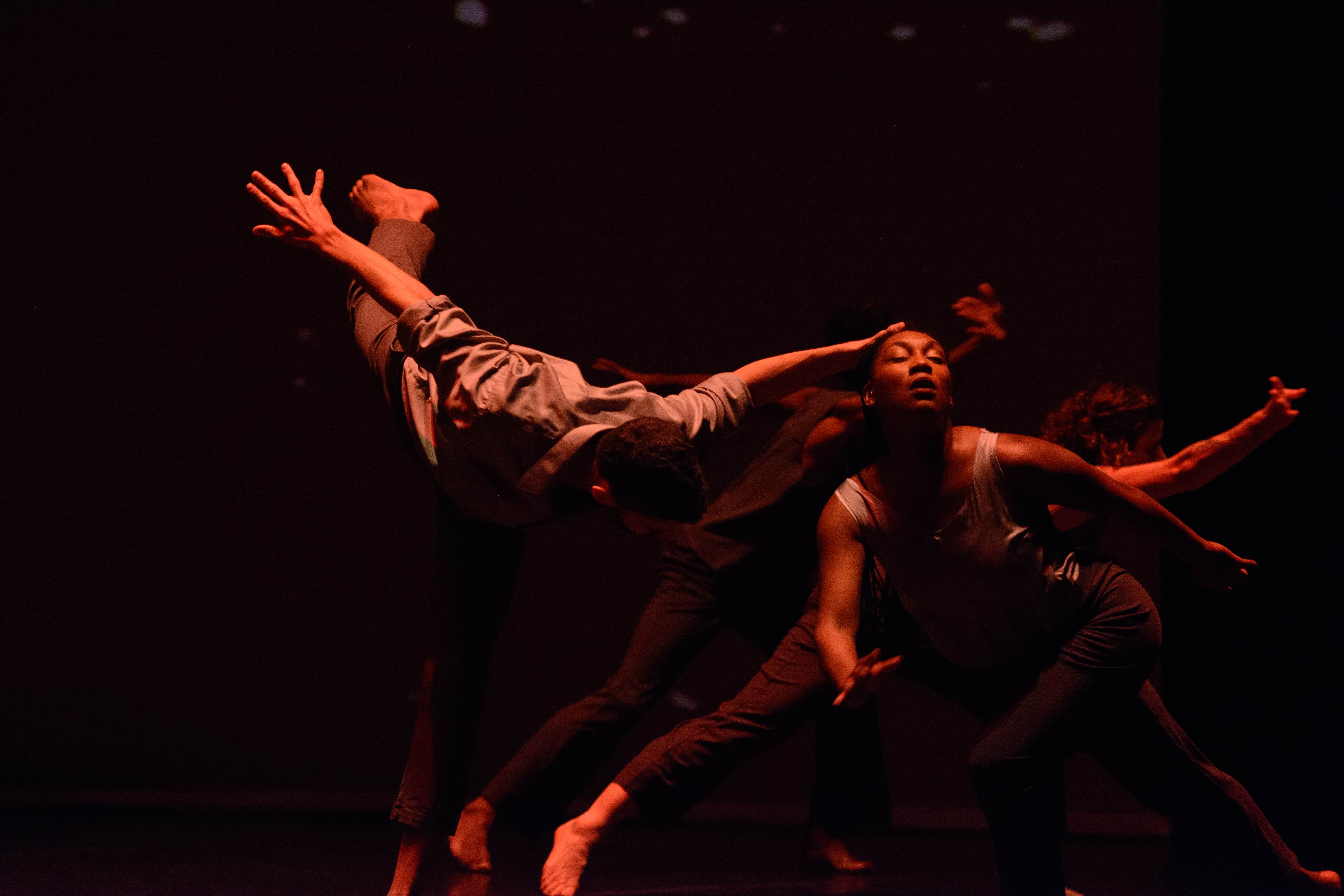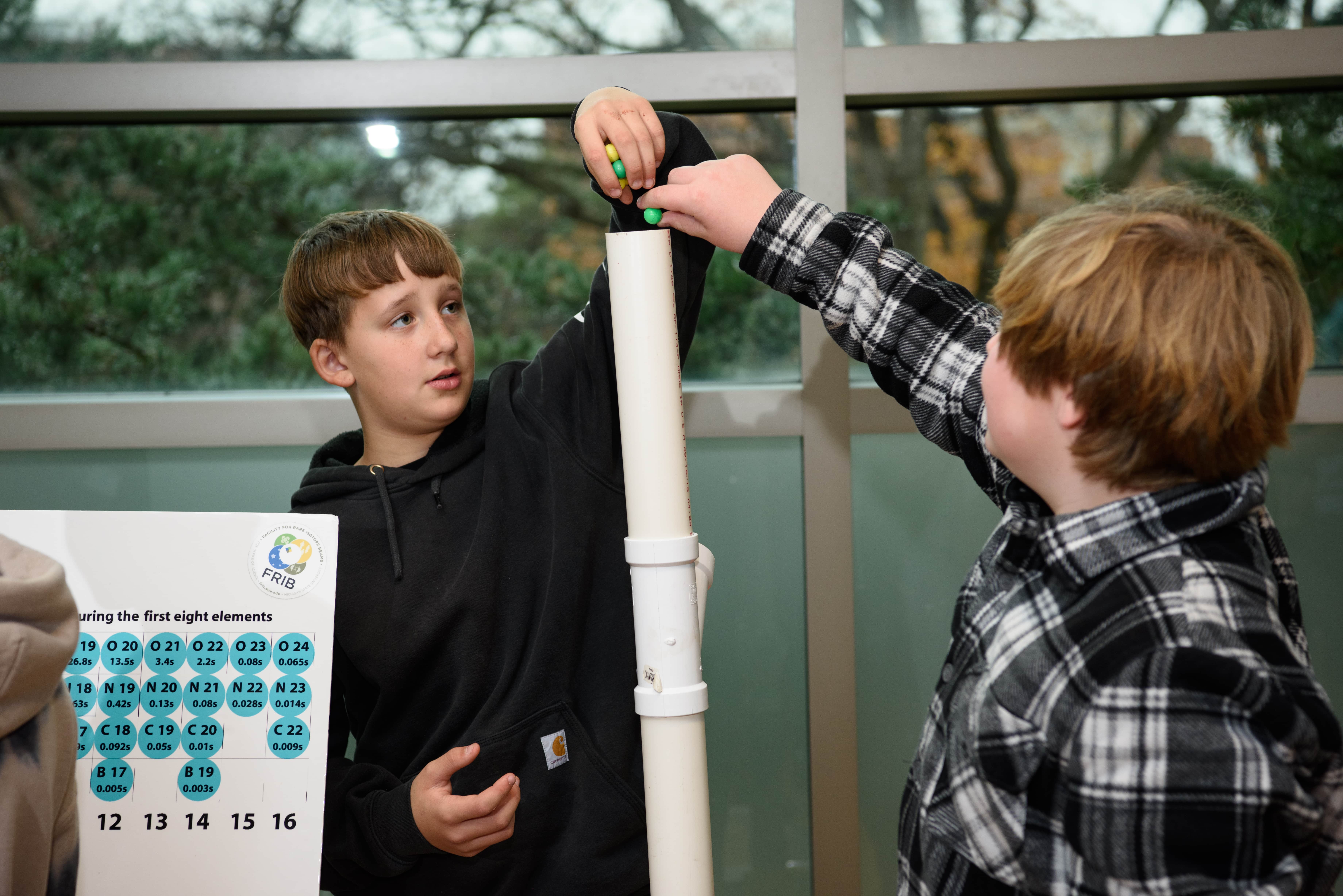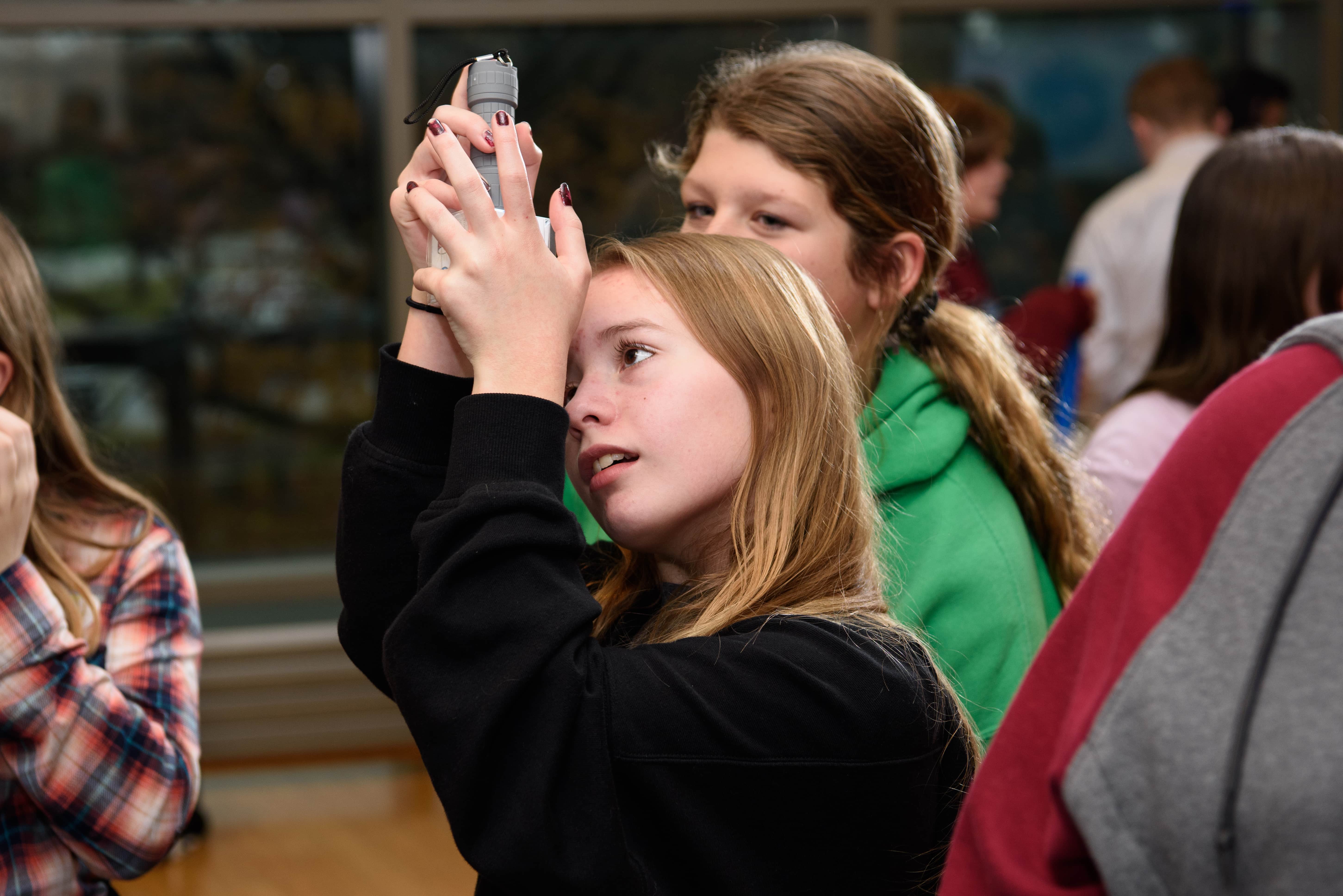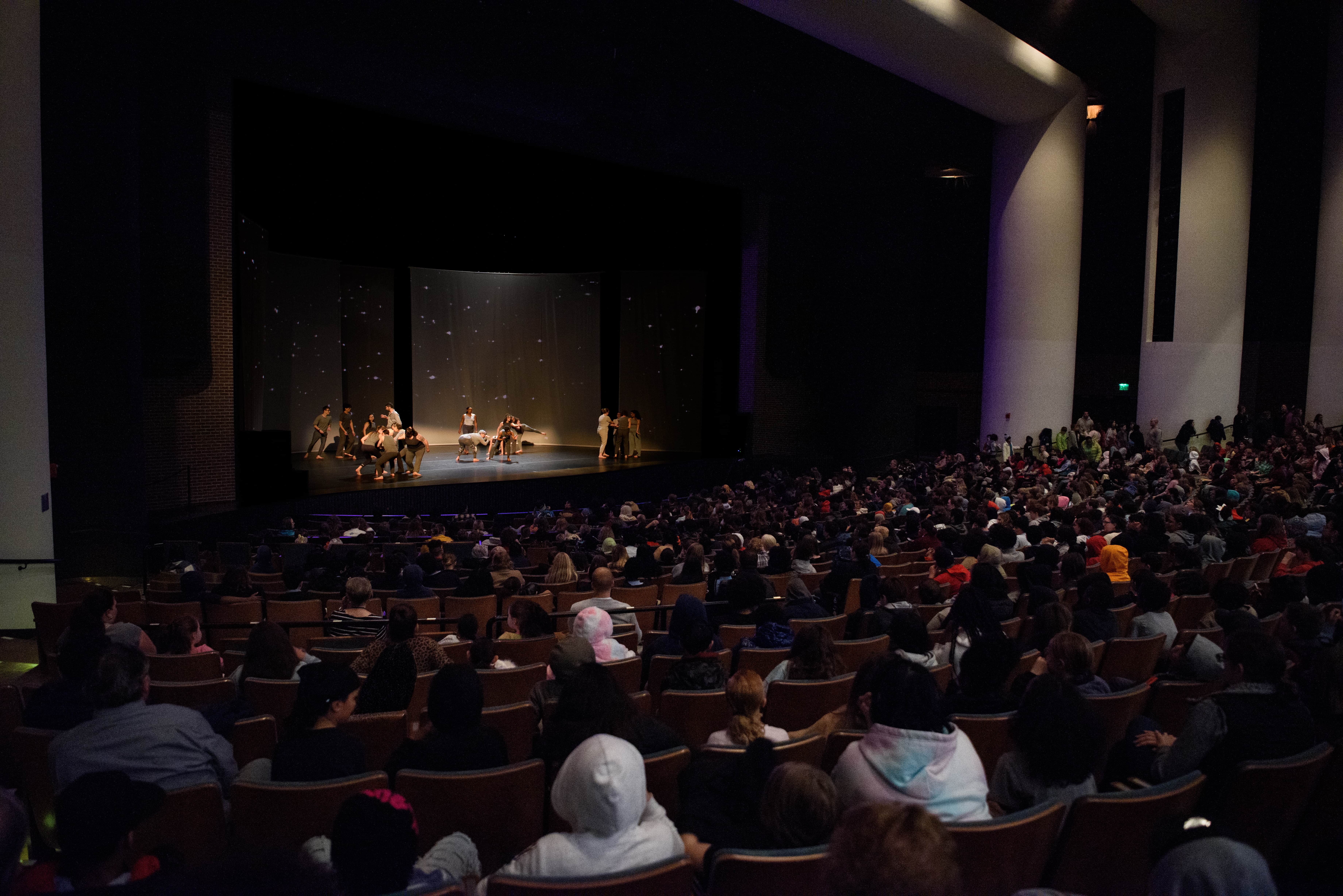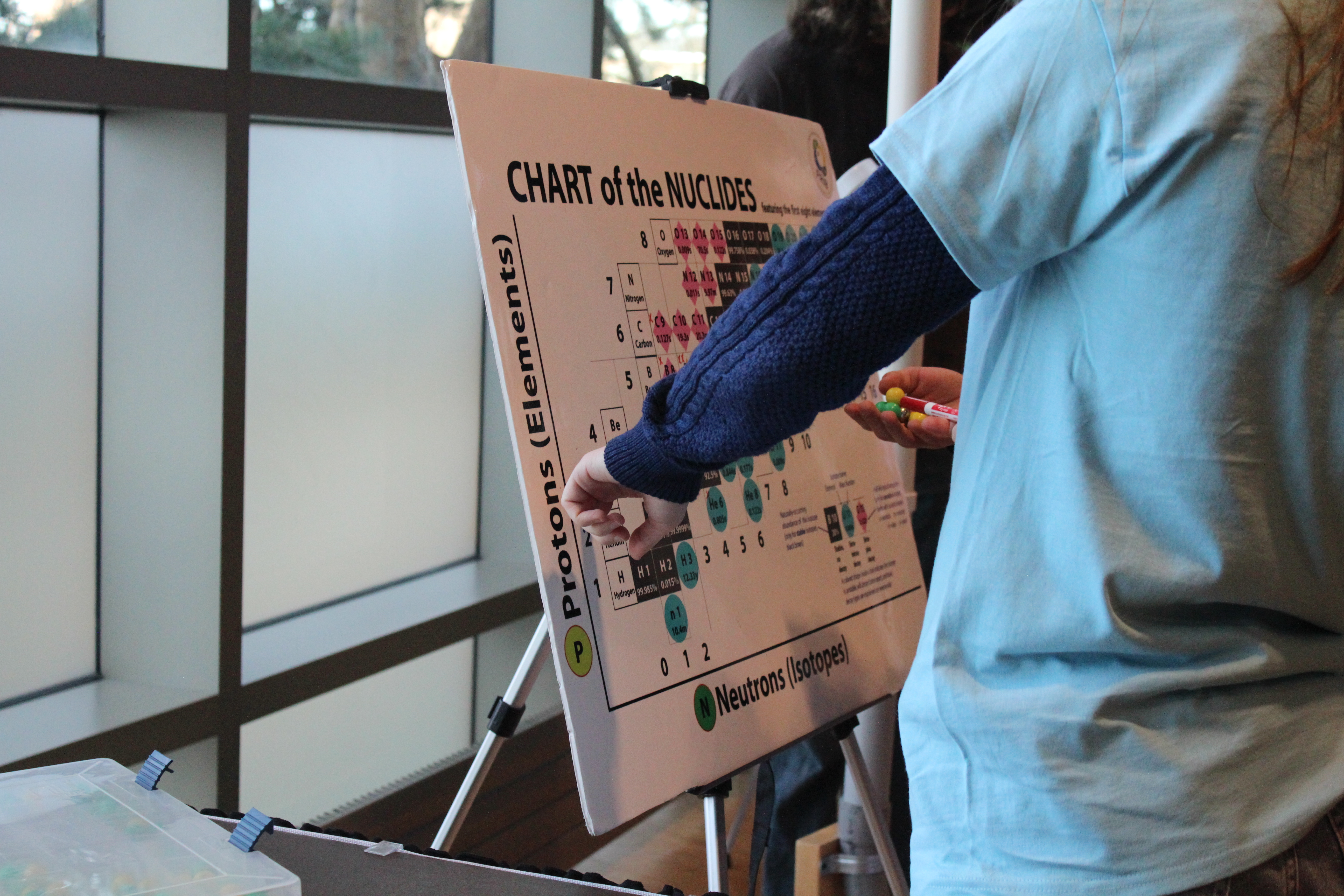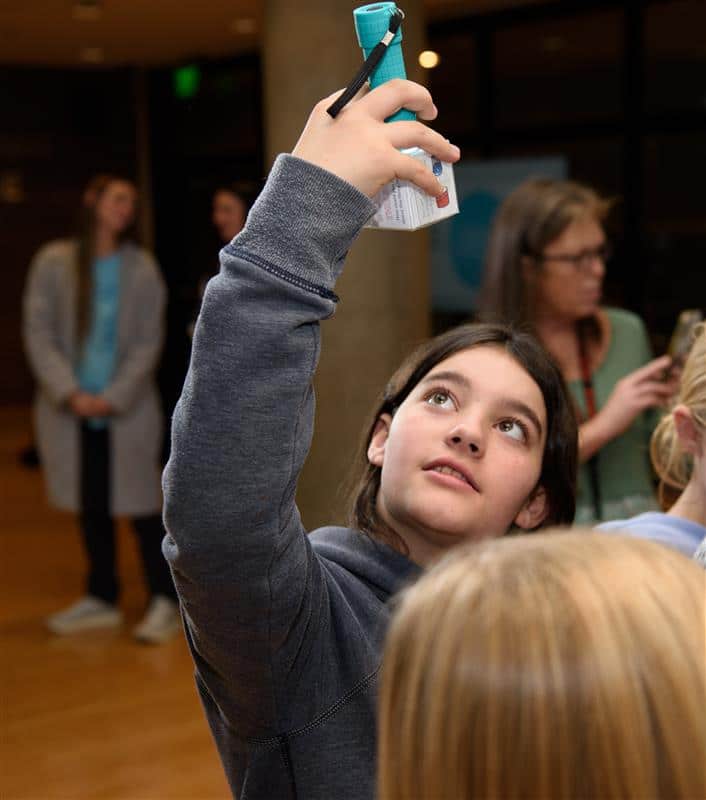Stability and instability, measurement, acceleration, fragmentation, and navigating mystery— these are shared themes in both nuclear science and dance. At frst glance, these concepts might seem best understood in isolation, but there is much to learn by bringing these two seemingly disparate felds together.
Wharton Center’s original commission, Of Equal Place: Isotopes in Motion, came to fruition at Michigan State University on November 14, 2024. This groundbreaking performance fused dance, multimedia, and physics into an exhilarating exploration of science and art.
Contemporary dance and science are often physically and intellectually separated. However, at Michigan State University, the Facility for Rare Isotope Beams—one of the world’s most advanced nuclear science research facilities—sits adjacent to Wharton Center for Performing Arts, one of the world’s leading performing arts centers.
“Wharton Center and FRIB both believe the arts can creatively translate complex scientific ideas into accessible, engaging representations, making science more relatable and inspiring curiosity,” says Eric Olmscheid, Executive Director of Wharton Center. “That is what makes this partnership so meaningful—we are truly using the arts and sciences as equal contributors in creating this new work of performance art.”
The two renowned institutions engaged Dance Exchange, a Washington, D.C.-based movement company, to devise a multimedia work inspired by FRIB’s cutting-edge research. Over a six-month process, visiting creatives collaborated with dancers, designers, and FRIB scientists to create the production. The 2024 performance expanded upon a 2022 iteration of the same name, emphasizing deeper integration with Mid-Michigan community partners.
“We are thrilled to be a part of this exciting collaboration between Wharton Center, Dance Exchange, Lansing schools, and many other community partners,” said FRIB Laboratory Director Thomas Glasmacher. “Partnerships like this offer a unique opportunity to bring FRIB’s research to the community in a creative way. We hope the performance provides a unique lens into our work, inspiring individuals from all backgrounds to see themselves as the next generation of researchers, innovators, and change-makers.”
“It’s about structure. Dance is structure, and science is structure. Both go together so well because we are speaking the same language,” explains Keith Thompson, Dance Exchange Creative Director and Choreographer. “That shared curiosity connects us all.”
The performance spotlighted diverse voices—women, BIPOC individuals, and youth—through a cast that celebrated a broad spectrum of ages, races, and cultural backgrounds. Featuring 24 performers, the cast included six Dance Exchange artists, 12 dancers from the community (representing All Of The Above Hip Hop Academy, Happendance, Greater Lansing Ballet, and Everett High School Dance Company), and six FRIB scientists—yes, dancing scientists.
In addition to the public premiere, more than 2,000 elementary, middle, and high school students attended matinee performances, many of whom participated in workshops before and after the show. These interactive learning experiences included:
- FRIB Tours: Students explored FRIB, where nuclei are smashed into a target at half the speed of light to study matter that doesn’t exist on Earth. Staff introduced various careers in science.
- Science in Your Seat: Attendees delved into big questions about the universe, learning the physics behind the dance movements and techniques.
- Science in Your Hands: Students engaged in hands-on demonstrations, including smashing model “nuclei” and identifying hidden objects, simulating challenges in nuclear science research.
- Science in Motion: In this dance-based workshop, students met performers from Of Equal Place: Isotopes in Motion and learned movements from the production.
For some, the collaboration extended beyond workshops or spectating. One local high school teacher and three students joined the cast, performing alongside Dance Exchange and professional dancers.
“Dance Exchange is one of my dream companies to work with because they value community, empowerment, and using people’s unique strengths,” said Clara Martinez, a local dancer and high school teacher. “The takeaway is to keep moving forward and working together. Our students are capable of this level of work, and I’m excited to fnd more opportunities for them.”
Clara participated in both the 2022 and 2024 productions, alongside several students from Everett High School.
“This highlights the storytelling power of dance. You can tell any story with your body,” said Gianna A., an Everett High School student. “Incorporating science is unconventional, but seeing how it all comes together is amazing. I’ve been dancing my whole life, and working with professionals like this is inspiring.”
“The community has been so welcoming,” shared Paulina Rivet of Greater Lansing Ballet Company. “This is the most diverse group I’ve danced with, and we found a shared home in science and dance. Anyone interested in science or dance can do both! I wasn’t a huge fan of science before, but I’ve come to see its beauty and how deeply it connects with dance.”
“This project was uniquely Michigan State University—created by, of, and for our community,” refected Olmscheid. “It demonstrates the power of collaboration, where all partners have equal place. The result was pure beauty.”
